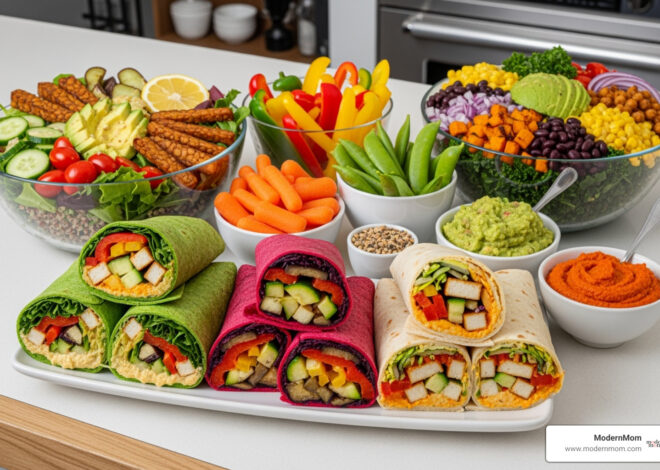Road Scholars: Teach Your Kids While You’re Driving
Given how much time the average parent spends driving their kids around, it’s a bit of a surprise that more people aren’t into ‘carschooling’.
The concept, the subject of a book published five years ago
by homeschooling authority, columnist and author Diane Flynn Keith (www.homefires.com and www.carschooling.com) turns the mundane reality of travel time on its head. Those who employ it say that the hours spent in freeway traffic can be used for purposes
greater than listening to talk radio or, worse, allowing the kids to watch yet another DVD on their personal players. Drive time, say believers, can be transformed into learning time.
And although Flynn Keith wrote the book based on her experiences homeschooling her two young sons, this isn’t something that should be exclusive to homeschooled kids.
“As my publisher said to me, all families carschool to one extent or another,” she said. “This is not a homeschool-specific activity. If you spend time in the car with your children, then you’ve undoubtedly answered their questions, endured a travel game like Slug-Bug or engaged in Twenty Questions, and had meaningful conversations. That’s carschooling!”
Flynn Keith’s book provides innovative ideas, activities and suggestions beyond traditional car or travel games for how to enhance time on the road with your kids. I bought the book a couple of years ago, when my sons were one and four, but have only started really using it recently. On a recent expedition to Venice Beach, as my
husband drove, I turned to the section on Carschooling Geography, where Flynn Keith had compiled a list of US cities with wacky names. There was Worms, Nebraska, Monkey’s Eyebrow in Kentucky, Square Butt in Montana. My older son, Jahan, giggled gleefully as I
read them aloud to him, pausing for effect before each one, and Nirvan just enjoyed the fact that we were all having fun.
Which, according to Flynn Keith, is really the point: that the time spent running back and forth between soccer matches, play dates, park trips – even commuting to school – should be spent in a way that engages and educates a child.
We talked to Flynn Keith about her reasons for writing ‘Carschooling’, and what she hopes for parents who try it.
What is carschooling?
“Carschooling is the act of turning travel time into learning time, whether you’re running a five-minute errand or taking a 500-mile road trip. By using the world whizzing by or resources you bring along in the car, you can have fun, boost your kids knowledge of the world, and turn them into ‘Road Scholars.’”
What prompted you to write this book? Following on from that, was there one specific outing with your kids that made you think: “Somebody should write a book about this?”
“My kids were in the circus for about four years. Each day we had to travel to their trapeze, tumbling, juggling, and high wire classes that were many miles apart. At one point we were on the road four hours a day, five days a week.
“I homeschooled my children, and we needed to use the time in the car to cover the subjects they needed to learn. I began looking for innovative ways to cover math, language arts, history, science, etc., while we were in the car, on the road. I discovered and invented many educational
activities, and then I started asking other parents what they did with their kids in the car. I couldn’t believe some of the wonderful suggestions people had – and realized that many parents engage in “carschooling.” I decided to take all of the ideas and put them in a book to help other families enjoy learning while they were in the car, on the go.”
Did you devise a lot of the games and exercises as you went along?
“Yes. Once you start to pay attention to the world around you as you’re driving along, you realize that everything provides an opportunity to learn. The traditional car game “I Spy” encourages observation. And once you notice something in the environment, it can lead to all kinds of learning opportunities. From the flora and fauna along the highway, to billboards, to historical markers and more – the world is a veritable classroom and laboratory.
“The boys often noticed things that sparked their interest. For example, roadkill. If safe, we’d pull over and look at the carcass. That would lead to all kinds of questions about animals, lifecycles, and more. Back in the car, we used field guides as well as educational CDs about various species to satiate the kids’ interest and curiosity.”
Did it surprise you to find out just how many families out there were interested in this kind of thing, or had been doing it on their own anyway?
“I was amazed by the ingenious ideas and activities other families concocted to take the whine out of drive time. All of them reported that not only did they enjoy learning together, the act of doing fun activities together also improved their relationships.”
{pagebreak}
What kind of a difference did you see in your children as you began implementing carschooling techniques?
“It virtually eliminated the complaints and squabbles kids have in the car. Most parents have been driven crazy in zero to sixty seconds by backseat commotion and whining from, “Mom, his foot is touching my foot,” to “Are we there, yet?” The kids were engaged in watching, listening, and hands-on activities that kept them happily occupied.”
Were there certain things you tried that just didn’t work? If so, what and why not?
“I learned very quickly that insisting the children do a particular activity because of some misguided need of mine to satisfy government curriculum standards was almost always ineffective. If I tried to drill them on their times tables it would often be met with resistance. On the other hand, if I put on a CD of multiplication tables set to rock music (which
they enjoyed) they learned the math facts effortlessly. I made a concerted effort to follow my kids’ interests whenever I introduced a topic or subject that I thought was worthwhile. It engaged them and led to some remarkable learning moments in the car.”
Some homeschooling parents might say that drive time should be their time to listen to the radio or an adult audio book or have a conversation with another passenger – and that the children would need to keep themselves occupied. How do you respond to that?
“These parents sound delusional to me! You can’t ignore kids – they won’t allow it. If you try to turn family time in the car into “me time” you’ll lose. Oh, you can
threaten the kids with authoritarian dictums, or plug them in to an entertainment system to keep them passive and compliant – but at what cost to your relationship with them? When you are in the car with your kids you have a “captive audience.” It’s one of the few places where you can turn off the noise of the culture, and really have meaningful conversations with your children that will bond you together in the most profound and heartfelt ways. Instead of resisting uninterrupted time together – embrace it!”
What was one of the most successful things you did with your boys as you carschooled them?
“I think everything we did was successful because it generated conversation. Whether we were listening to books on tape, talking about the red-tailed hawks we saw on telephone poles, looking for nouns or verbs in billboard advertisements, estimating the mileage from one point to
another on the horizon – it all led to discussion. Those discussions gave me insight into what they were thinking, what they were interested in, how they processed information, what their strengths and weaknesses were, and how they learned best. Because I listened to what they had to say, it built a foundation of trust and good will that continues to this day.”
Of some of those early experiences, have any of them stayed with them today?
“Yes. They are both very inquisitive and curious and aware of what’s in their environment at any given time. They continue to ask questions and find answers to whatever sparks their interest.”
Should carschooling become more of a movement, more of a habit among homeschooling familes?
“I don’t believe in adhering to any one way of learning. You have to custom-tailor educational pursuits to the interests, needs, and abilities of your unique children. That said, when you homeschool you typically do spend inordinate amounts of time in the car schlepping the kids to park days, co-op classes, field trips, music lessons, and all of the “normal” activities like 4-H, scouting, AYSO soccer, etc. Why not take advantage of that unconditional time in the car to engage in some fun educational moments that can spark a life-long love of learning? And that, after all, is the goal of homeschooling.”
And what are some of the key mistakes that parents make as they drive their children around? Should they be talking to them more? Engaging them? Do you find that a lot of them just don’t use that time effectively?
“I think establishing boundaries for appropriate behavior in the car is key. That’s more of a parenting skill than a “carschooling” skill, but it’s critical to everyone’s sanity and happiness. My book offers all kinds of suggestions and tips for how to do that – compiled from advice offered by parents who are frequently in the car, on the road with their kids.”
It took me a little time to get past the confines of ‘I Spy’ and to try and do more interesting things with my kids in the car. We’ve started playing ‘Alphabet Jump Rope’, encouraging kids to think up words that start with a particular letter to fill in blanks in a jingle like:
‘My name is…
My best friend’s name is…
We live in …
And we sell ….’
{pagebreak}
To do it effectively, it also helps to be organized. Flynn Keith advocates the use of flash cards, audio books and language tapes. In fact, there’s a whole section on ‘Getting Organized’, which can be monumentally useful provided you are one of those reasonably together parents. (I am not – I figure that if I often forget to pack bottled water and enough snacks for the kids, what’s the likelihood that I’ll remember to bring a magnifying glass and field guide?)
Flynn Keith points out early in the book that it’s not about the mechanics and sticking to any formula. It’s about having fun with your children as you drive them from place to place, about turning off the radio or getting off the cell phone and just connecting with them in ways that stimulate and engage them. It could be as simple as waxing nostalgic about the day they
were born, or as specific as telling them what the various car makes stand for – Pontiac was apparently named after a town in Michigan that itself was named after an Ottawa Native American. Who knew?
“Effectively using time spent in the car with them playing fun and interactive educational games, or immersed in earnest discussions about provocative issues of the day,” she writes in the book, “Improves communication, builds trust and goodwill, and bonds families together in profound and heartfelt ways.”
I doubt there’s a parent among us who wouldn’t go for a bit of that.
Kavita Daswani is a Los Angeles-based journalist and the author of the novels, For Matrimonial Purposes, and The Village Bride of Beverly Hills. For more on homeschooling, look for Kavita’s Why Homeschool?, Part Two, in which she chronicles her son’s experiences in the Homeschool Partnership Program.




